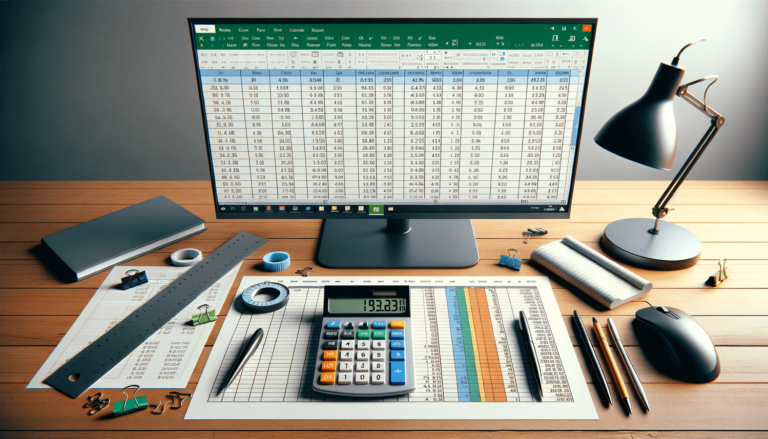

Welcome to this guide on how to compute in Excel. Excel is a powerful tool that can help you with all sorts of numerical calculations, from basic arithmetic operations to complex financial modeling. In this guide, we will take you through the fundamentals of using Excel to perform computations and help you get started on your journey to becoming an Excel master.
If you are new to Excel, it is essential to understand some of the basic math functions that can help you perform simple calculations. To get started, open a new workbook and type in the values you want to calculate. Then, highlight the cells you want to calculate.
Excel has many built-in formulas that can help you perform complicated calculations with ease. To use a formula in Excel, start by typing =, followed by the formula name, and then the arguments in parentheses. For example, to calculate the sum of a range of cells, use the SUM formula, like =SUM(A1:A10). Here are some essential formulas to help you perform complex math functions:
Excel has many built-in functions that can help you perform a wide range of calculations, including financial, statistical, and engineering functions. Here are some common built-in functions that you can use:
Now that you have learned the basics of computing in Excel and how to use formulas and built-in functions, you can start using the powerful capabilities of this software to perform complex calculations and analyses. With practice and experience, you can become a skilled Excel user in no time.
Excel has many keyboard shortcuts that you can use to speed up your computations without having to use your mouse. Here are some of the most commonly used shortcuts:
Conditional formatting is a feature in Excel that allows you to apply formatting based on specified conditions. This can help you visualize your computations and make more informed decisions. For example, you can use conditional formatting to highlight cells or rows that meet specific criteria, such as values above or below a particular threshold. To use conditional formatting in Excel, follow these steps:
Macros in Excel are recorded sequences of commands that can be used to automate repetitive tasks or computations. With macros, you can save time and reduce errors by having Excel perform calculations automatically. To create a macro in Excel, follow these steps:
In conclusion, Excel is a powerful tool that can help you perform a wide range of computations. Whether you are working with basic math functions or complex financial models, Excel has everything you need to get the job done. By following the tips outlined in this guide, you can become a proficient Excel user in no time. Remember to explore all the features and functions Excel has to offer, and don’t be afraid to experiment and try new things. Happy computing!
Here are some frequently asked questions about computing in Excel:
Excel has many built-in functions that can help you perform calculations quickly and easily. Some commonly used functions include SUM, AVERAGE, MAX, MIN, and COUNT. These functions can save you time by performing calculations automatically, so you don’t have to manually enter values into a formula.
Learning to use Excel formulas can be challenging, but there are many resources available to help you. You can start by attending online tutorials, attending Excel training courses, or reading Excel for Dummies. Additionally, you can practice using the formulas by working through example problems or creating your own formulas and experimenting with the different options available.
Yes, Excel is a widely used tool for financial modeling. Excel provides a range of financial functions that can be used to calculate cash flows, net present value, internal rate of return, and other financial metrics. By using Excel, you can create an accurate financial model that can help you make informed decisions about your business.
To speed up computations in Excel, you can use keyboard shortcuts, apply conditional formatting, and use macros to automate repetitive tasks. Additionally, you can optimize your workbook by removing unnecessary formulas and data, and by using specialized add-ins that can help you speed up computations.
Some common mistakes to avoid when computing in Excel include using incorrect formulas, copying and pasting incorrect values, and not using absolute references when necessary. Additionally, you should be careful when using macros, as they can lead to errors if not used correctly.
Explore the world of Microsoft PowerPoint with LearnPowerpoint.io, where we provide tailored tutorials and valuable tips to transform your presentation skills and clarify PowerPoint for enthusiasts and professionals alike.

Your ultimate guide to mastering Microsoft Word! Dive into our extensive collection of tutorials and tips designed to make Word simple and effective for users of all skill levels.

Boost your brand's online presence with Resultris Content Marketing Subscriptions. Enjoy high-quality, on-demand content marketing services to grow your business.
